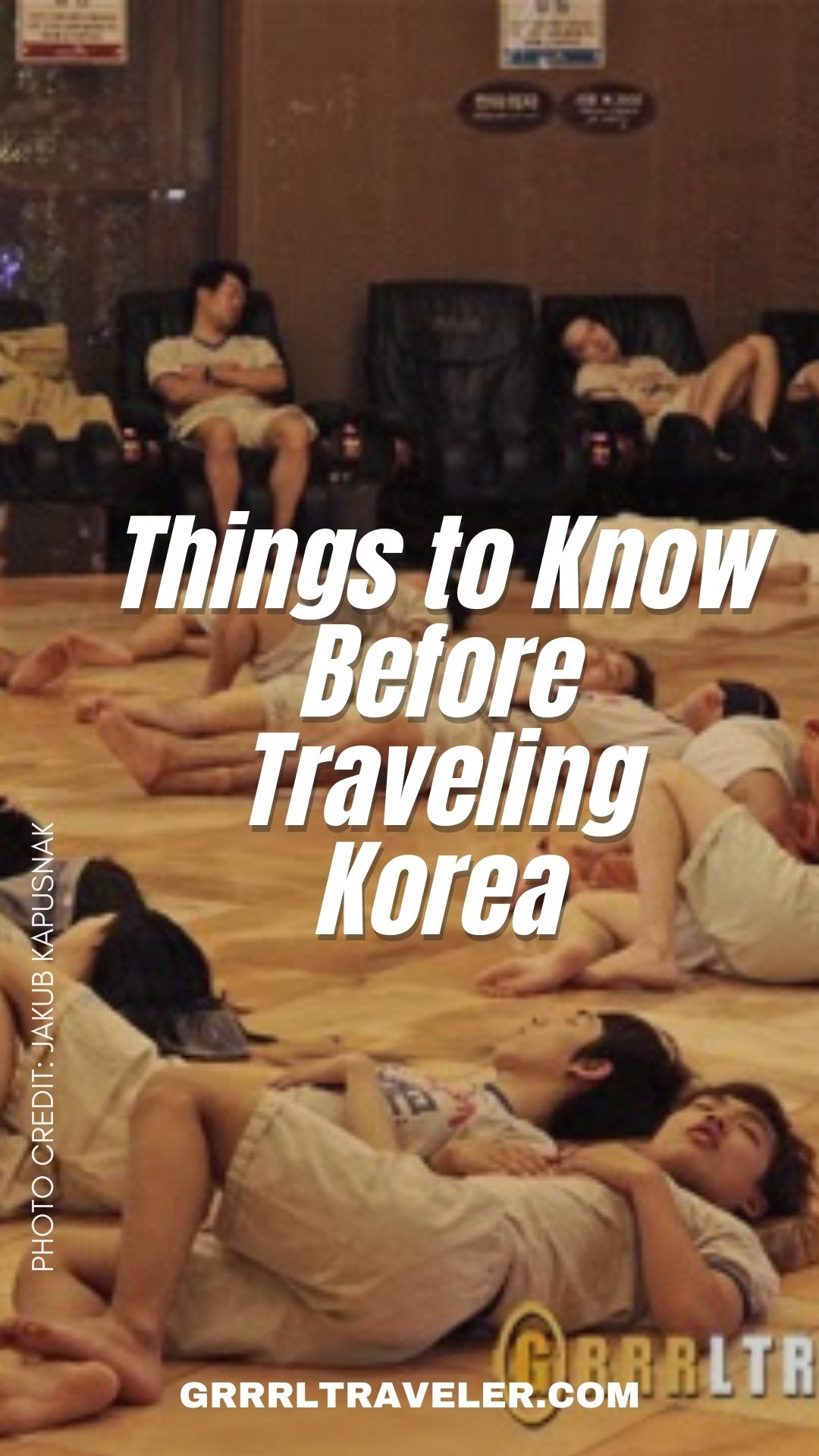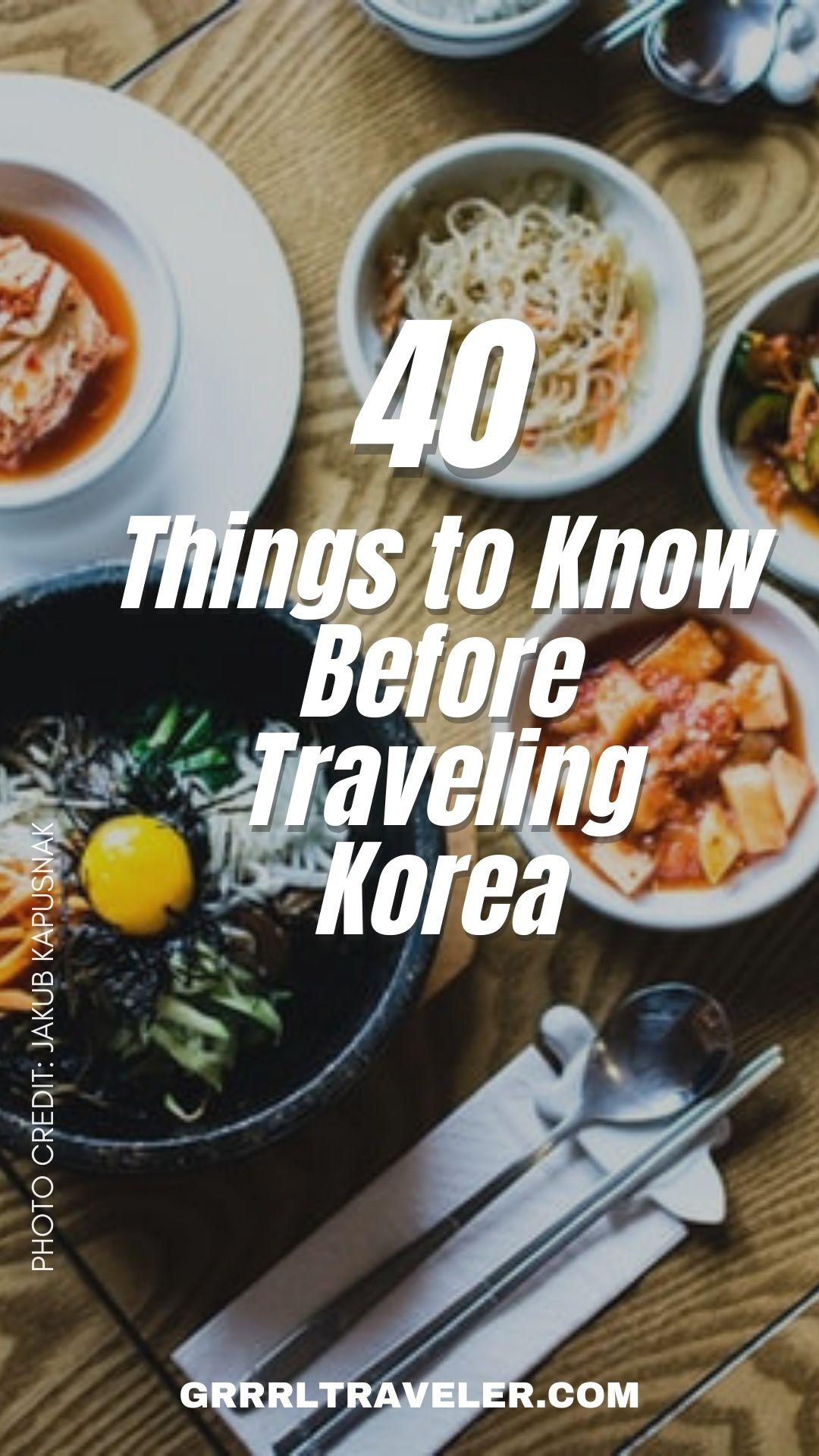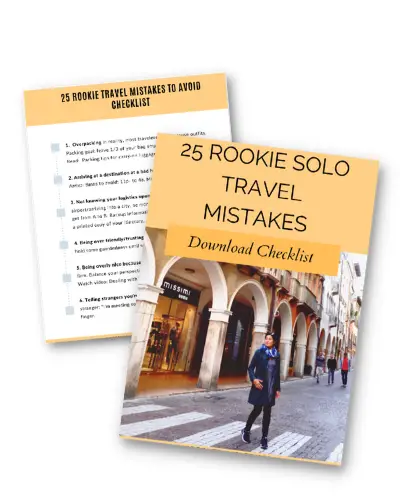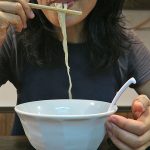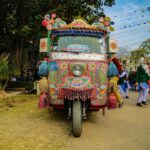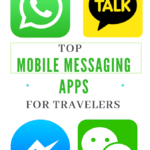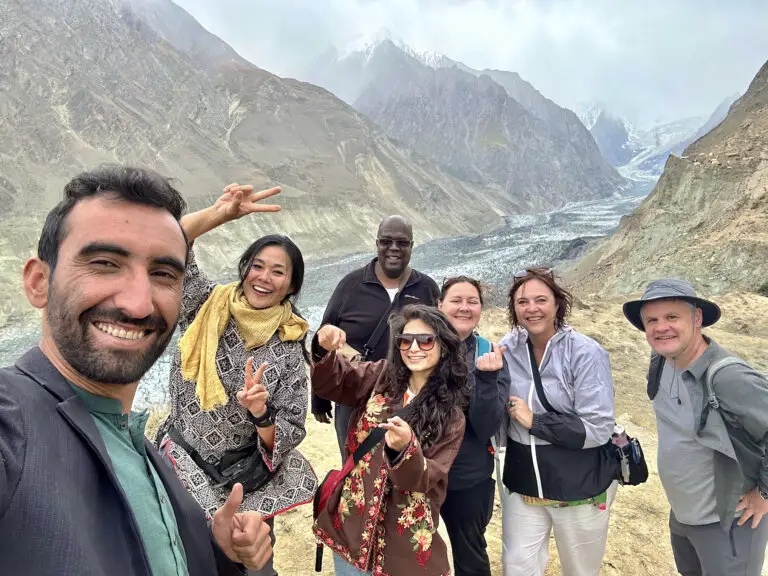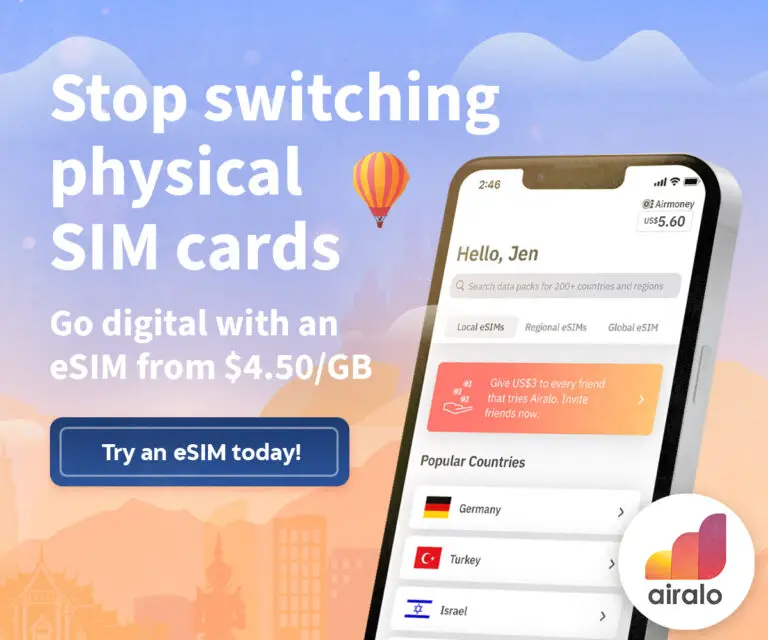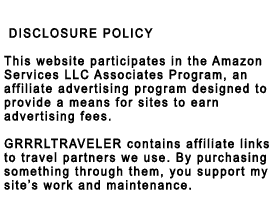Last Updated on January 8, 2024 by Christine Kaaloa
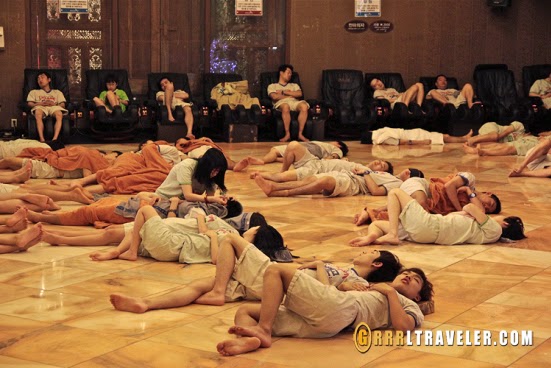
Table of Contents: 42 Things to Know Before Traveling Korea
- 0.1 42 Things to Know Before Traveling Korea
- 0.2 Getting Around Korea
- 0.2.1 3. Be prepared to walk …a lot.
- 0.2.2 4. Taxis are an inexpensive
- 0.2.3 5. Korean alphabet is easy to learn
- 0.2.4 6. Learn Korean travel survival phrases
- 0.2.5 7. Try a Korean accent.
- 0.2.6 8. Korea’s Top Airlines are Korean Airlines and Asiana Air
- 0.2.7 9. Food in Korea is spicy.
- 0.2.8 10. Korean food is inexpensive
- 0.2.9 11. Kimchi is served at every meal.
- 0.2.10 12. Breakfast is a must.
- 0.2.11 13. Unlimited Korean side dishes
- 0.2.12 14. Bibimbap is a foreigner’s best friend.
- 0.2.13 15. Drinking cup sizes
- 0.2.14 16. Soju
- 0.2.15 17. Live and Fresh Foods
- 0.2.16 18. Is there tipping in Korea?
- 0.3 Navigating Public Spaces
- 1 Korean culture and etiquette
- 1.0.1 24. Korean culture respects formality and tradition.
- 1.0.2 25. Plastic surgery is popular.
- 1.0.3 26. Pushing and shoving is not rude
- 1.0.4 27. Spitting happens
- 1.0.5 28. Koreans make offerings with both hands
- 1.0.6 29. Age matters in Korean culture.
- 1.0.7 30. No Nose Blowing
- 1.0.8 31. Be prepared to drink until the boss goes home.
- 1.0.9 32. Don’t want to drive drunk? Call a driver
- 1.0.10 33. Koreans love noraebang
- 1.0.11 34. Warm Water vs Iced water
- 1.0.12 Shopping & Activities
- 1.0.13 35. Korean is a gifting culture
- 1.0.14 36. Visit a Korean bathhouse
- 1.0.15 37. Cafe culture in Korean culture is crazy
- 1.0.16 38. Hiking is a favorite pastime and fashion sport in Korea.
- 1.0.17 39. Skincare stores are amazing
- 1.0.18 40. Getting a perm in Korea!!!
- 1.0.19 41. Experience living like a monk with temple stays
- 1.0.20 42. Shopping in Korea is fun.
- 1.1 Travel Resources for your Korea trip
- 2 Watch Essential Travel Tips for Korea (video)
42 Things to Know Before Traveling Korea
1. Is Korea Safe?
2. Korea’s big brother is CCTV
When I thought I lost my passport and went to the front desk because I knew it was the last place I took it out, the manager went to the security room and then after 15 minutes, returned and told me that from the CCTV footage, he noticed I had taken my passport up to the room! When I scoured my room, I discovered my passport had somehow fallen behind a dresser bureau.
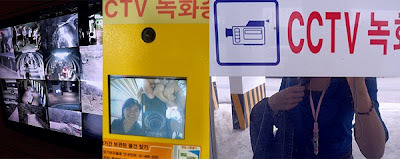
Getting Around Korea
3. Be prepared to walk …a lot.
Korean seniors are fit and active people; they make westerners look slothful. If you’re taking the metro in Korea, prepare to climb stairs …sometimes, multiple levels. Korea has escalators, but usually it’s for intense climbs– hiking a floor or three with luggage does not get sympathy from Korea.
Tip: Wear very comfortable walking shoes. If you are traveling with elderly parents, take taxis instead.
4. Taxis are an inexpensive
Next to the metro, taxis are an inexpensive way to get around. When I lived in Korea, I used taxis a lot; often for grocery shopping. The cost is almost 1/3 the price of a New York City and you will get to your location quick and easy, especially if you are carrying shopping bags and luggage.
Read Essential Travel Tips for Seoul
5. Korean alphabet is easy to learn
Hangul is the Korean alphabet and it is easy to learn. It consists of 24 characters and if you’re ambitious you can learn it in a day! While it is not necessary to learn hangul for your vacation, it can facilitate easy when reading some signs, as the characters are efficient when you sound them out. In fact, it is easier to pronounce Korean when you read its alphabets versus write it in English. Read how to get Hangul on your Mac computer
6. Learn Korean travel survival phrases
Learn survival phrases below as a basic foundation for your trip as it may come in handy. If you’re in Seoul, English is a little more common, especially around the younger generation. Outside Seoul, like Daegu or smaller cities, spoken English language gets to be less. Not to worry, Koreans try their best to help and if you’re lost, they might even lead you by the hand to your location.
[ Tip: It helps if you have a map that you can point to ]
Read my post on unblocking language barriers in travel
7. Try a Korean accent.
Here’s a list here. Read how to deal with language barriers.
Here’s a quick primer in Korean pronunciation. The Korean language does not have hard sounding consonants. Instead, certain hard sounding consonants will be merged together to make the same alphabet. Thus, you’ll often see Koreans spell the same word differently. Let’s take cities Daegu/Taegu or Busan/Pusan:
8. Korea’s Top Airlines are Korean Airlines and Asiana Air
Korean Airlines and Asiana Airlines are Korea’s two premier airlines and are highly recommended. The hospitality, food and complementary in-flight services are top notch. Flight attendants are beautiful and immaculately dressed with a smile as Korea prides itself on beauty, hospitality and a peaceful experience.
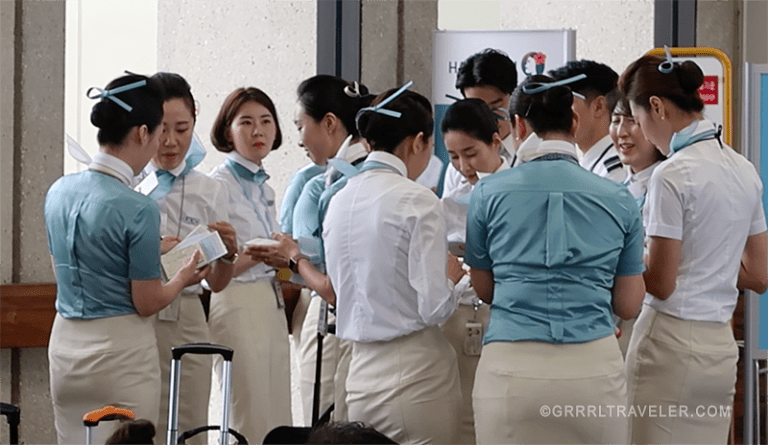
9. Food in Korea is spicy.
Korean food is super delicious, due to the fish and oyster sauces and garlic but just a warning~ it can be very spicy and by spicy, I mean hot. You might break a sweat, your nose will run and you’ll want to blow it…. but don’t!!!
Tip: If you can’t handle a lot of spice, consider sushi restaurants, western-style restaurants, kimbap restaurants (kimbap aka sushi rolls) or order dishes like chook (aka rice porridge), duenjanjigae (soybean soup).
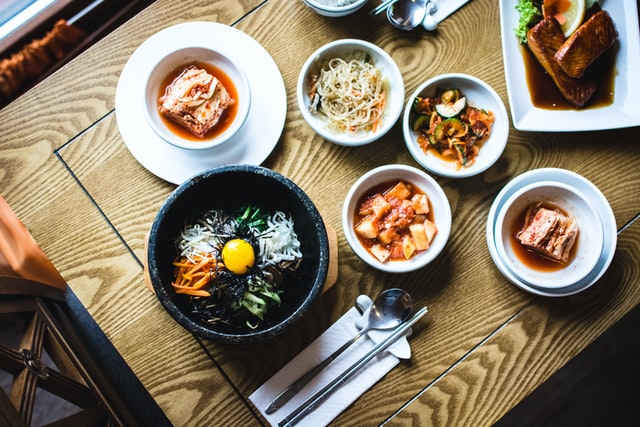
10. Korean food is inexpensive
If you’re on a budget, you’ll find Korean food to be very easy on your wallet. From street food from under $1 to a small meal for under $5, you can get an insane amount of food. Some of my favorites are: soon dubu jigae (soft tofu stew), doenjang jigae (soy bean stew), bibimbap, bibimgooksu and a whole bunch of vegetable side dishes.
Tip: Take a Korean cooking class and market tour in Seoul
11. Kimchi is served at every meal.
Kimchi is the national vegetable and a favorite panchan (aka side dish) you’ll see accompany every meal.. including breakfast . It is a tradition passed down through the women of the household and there are kimchi making seasons in the fall season, when you’ll see incredibly large cabbages being sold at supermarkets. Korean women still gather with their female family members to prepare kimchi for the season. However, modern Korean women who are too busy will simply buy it from the supermarket. There are many contradictions about its healthy properties which you’ll hear, from curing cancer to being too high in sodium. In either case, kimchi is spicy but super flavorful; it is a strong flavor you will not find anywhere outside of Korea.
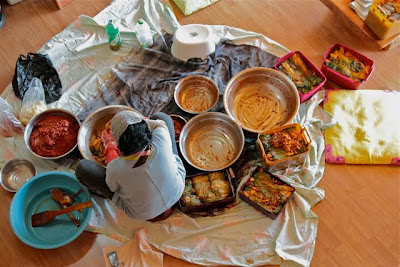
12. Breakfast is a must.
When I lived in Korea, every school morning, my Korean co-teachers would greet me with “Good morning, How was your breakfast?” as I held my banana smoothie shake breakfast in my thermos. I didn’t have the heart to tell them I didn’t eat it.
Koreans see breakfast as the most important meal.
13. Unlimited Korean side dishes
Korean foods come with a bunch of complementary side dishes (aka panchan or ban-chan) to add flavor and variety to the meal. They are part of the free service and you can order as much of them as you want.
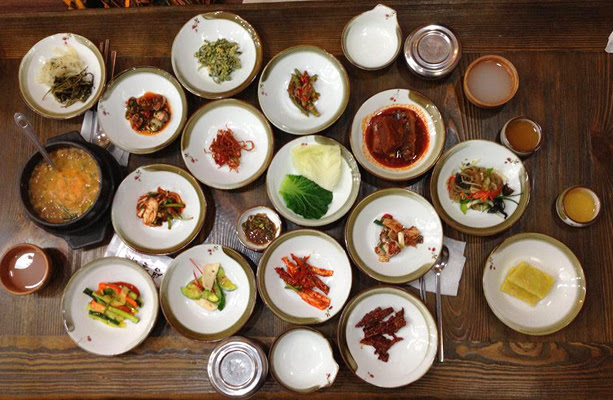
14. Bibimbap is a foreigner’s best friend.
You might be timid about trying Korean food, especially if there are no English menus or you have a special diet. Bibimbap is an easy dish to love. It’s a mixture of rice with soy beans, namul, kimchi, veggies, occasionally meat or an egg, sesame oil and spicy red gochujang sauce. You mix them together and you’ve got bibimbap which is an explosion of fresh, spicy, salty and juicy flavors in each spoonful!
15. Drinking cup sizes
One thing that was very difficult for me to get used to in Korea was the size of the drinking cups. Americans love big drinking cups, but in Korea, the average sized drinking cup fits in your palm. It’s like kiddie cup size.
16. Soju
Soju is the preferred alcoholic beverage in Korea. Served in a shot glass, soju is similar to sake in that it is made from rice and is quite strong. It is stronger than beer, another favorite alcohol in Korea. Soju bombs are a popular drink to get slaughtered. Soju shots are dropped into a glass of beer and the real party begins.
17. Live and Fresh Foods
Koreans like foods fresh. Sometimes, that translates as “alive and still squirming”, like live octopus. At Jalgachi fish market restaurants in Busan, when you order sashimi, they sometimes bring the plate with the fish tail still writhing. But on tamer notes, this can also mean that shopping for product in grocery marts, you might have some produce, like potatoes, will fresh dirt on it and meat sold at grocery stores, is not always pre-wrapped.
Tip: Take a Busan day trip with Jalgachi Market visit.
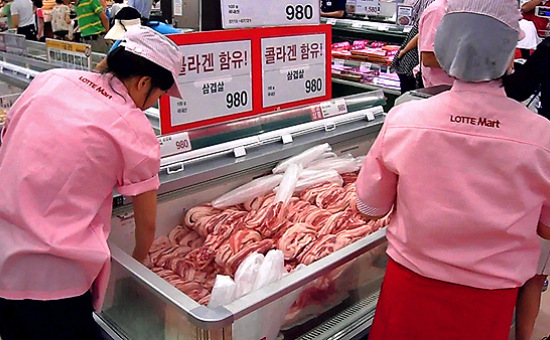
18. Is there tipping in Korea?
Similar to Japan, Korea is a no-tipping country. You are not expected to leave a tip and in some situations, it is considered rude. However in more western establishments, there is a growing awareness of western tipping culture and some Koreans will understand it is done out of appreciation.
19. Where are the toilets (and toilet paper) in Korea?
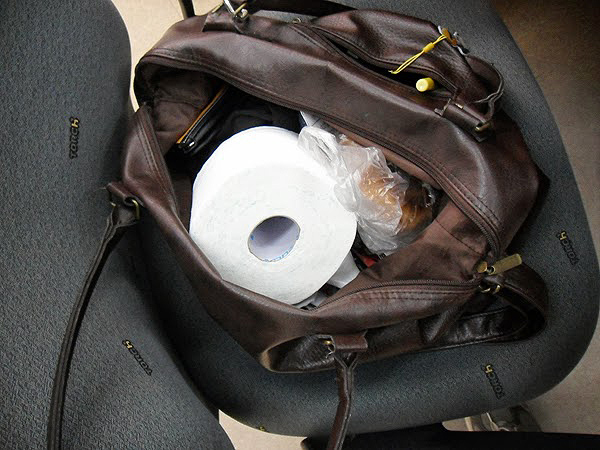
20. The public bathroom bar of soap
One thing you’ll find in Korean public bathrooms are a community hand soap. No, not the dispenser type (although in upscale Seoul bathrooms, you may find it). It’s a rounded bar of soap sticking out from the wash basin and you wet your hands and rub them over the soap to get it on you. It’s a slight turn off for Westerners who prefer their soap to not share the hands of others who have used the bathroom.
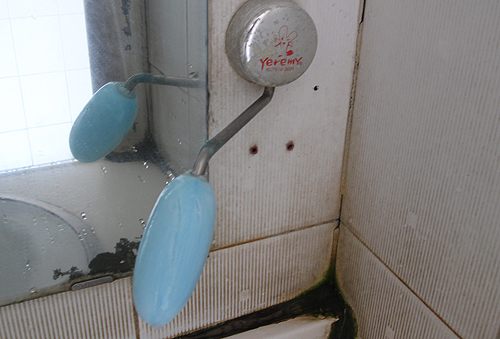
21. Toilets in Korea
In Korea you’ll find three types of toilets: a squat toilet, a standard western toilet, a Toto toilet.
The Toto Toilet is a favorite of many. It is a luxury version of the standard western toilet but with side controls which offer bidet and drying features. Some even come with seat warming which is ideal during winter.
Squat toilets are typically the old-style Korean toilet and you’ll find them in older establishments, such as older restaurants, schools, parks, etc.. Often you’ll find a few obligatory squat toilets but many are being replaced by western toilets in large cities. Seoul, Busan and nice shopping malls, you may find more Toto toilets.
Read How to use a Squat toilet
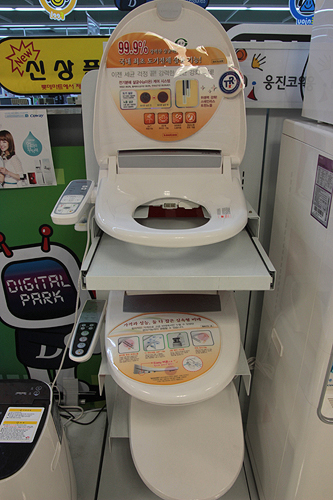
22. Where are the trash bins in Korea
Toilets are more ubiquitous than trash cans. You’ll find toilets in many places but where are the trash cans? You may find some in metro stations by the the drink vending machines or in fast food eating establishments and restaurants. But generally Koreans hold them in their bags until they find an actual trash can.
Read more Korean quirks which shock you.
23. Public spaces are not heated during winter
If you’re traveling Korea in the winter, pack a lot of warm clothes. Not only does Korea get brutally cold but there is not heating in public places such as bathrooms, school hallways/bathrooms, train or bus stations, metro stations, etc..
Koreans have a thing with using their heater. Houses are kept warm with ondol (floor heating), but that is the only place you will find consistent warmth and when I taught at a Korean public school, we could only run our classroom heater when the students had class in it.
Korean culture and etiquette
24. Korean culture respects formality and tradition.
Greetings and formalities are always appreciated. You’ll be saying Hello and Thank you a lot. Anyeong-haseyo and Kam-sa-hamneda!
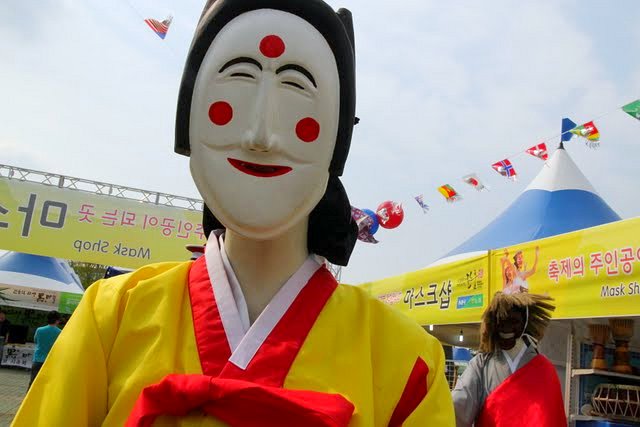
25. Plastic surgery is popular.
Koreans do not blink where plastic surgery is- it is popular with both young and mature. The outward appearance has its place in society and Koreans see good physical features as a stepping stone to success and societal placement. Double eyelid surgery, nose jobs, jaw shavings, botox injections are common. Youth are occasionally gifted plastic surgery for passing an exam and there are even mother-daughter discounts. Plastic surgeons in Korea are quite good and many travelers plan their vacations around plastic surgery procedures and medical tourism.
Living in Korea, I’ve had many Koreans ask if my eyelids were natural; some even poked their finger over my eyelids to touch it!
26. Pushing and shoving is not rude
In western society, pushing and shoving is considered rude, but in a crowded train, it is done a lot in Korea. People have places to be and can be urgent to get there; do not be offended if your pokiness is given a little shove.
27. Spitting happens
Older Korean men occasionally love to hock a loud one and spit on the ground. In Korea, this is acceptable and Koreans are unfazed by it.
Tip: I would not place my luggage or bags on the ground.
28. Koreans make offerings with both hands
29. Age matters in Korean culture.

30. No Nose Blowing
31. Be prepared to drink until the boss goes home.
Soju, makkeoli (rice wine) and maekju (beer) are the popular alcoholic beverages in Korea. I’m not sure why drinking is so big, but it’s all about bonding. And then hierarchy. If you’re going for business purposes, know it’s impolite to refuse a drink. If you’re working with a Korean company, then hope your drinking levels are up to standard, because you won’t be able to leave until your boss does.
How did I fare when I was there? Well, I’m absolutely not a drinker, but thankfully my Korean teacher was more western and did not drink herself. She explained it was a western misunderstanding and it is against my religion. But otherwise, Koreans will expect you to drink.
32. Don’t want to drive drunk? Call a driver
As Koreans are heavy drinkers and understand that it is dangerous to drive drunk, so they hire driver services. You call a driver service and the driver appears at the bar or restaurant and drives both you and your car home.
33. Koreans love noraebang
Noraebang (karaoke singing) is a popular form of relaxation and social entertainment in Korea. Koreans love to sing and are crazy about it. It is a part of their bonding culture. Karaoke rooms range with having disco lights, musical instruments like tambourines and a television monitor playing a video with words to the song.
The first week I started work at my Korean elementary school, we had a teacher’s welcome dinner and we were each handed the microphone and were required to sing a song. It is part of being a part of community.
34. Warm Water vs Iced water
Iced water and drinking water are not always common to restaurant experiences. In fast restaurants, you may have to go to the water cooler to pour your own cup. Iced water is not a popular way water is taken, quite possibly due to the fact that health-wise, it’s shocking to the system. Koreans are health-conscious people, so the water will usually be room temperature or hot.But water is generally taken after a meal and often, it’s hot to warm water, which helps aid digestion.
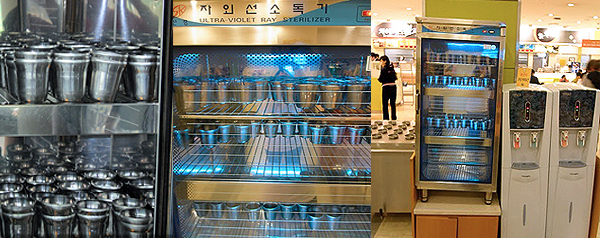
Shopping & Activities
35. Korean is a gifting culture
Korean culture can appear generous~ it seems they are always generously giving gifts. You’ll experience it and you it will feel too good to be true~ you’ll wonder what the catch is. From unlimited panchan (side dishes) at the restaurant to skin care shops which give you a handful of samples or face masks for stepping into their store to 1+1 sales where you get an extra product or sometimes, extra gift with your purchase, Koreans constantly seem to gift each other. Many of these gifts are a marketing incentive to keep customers coming back for more.
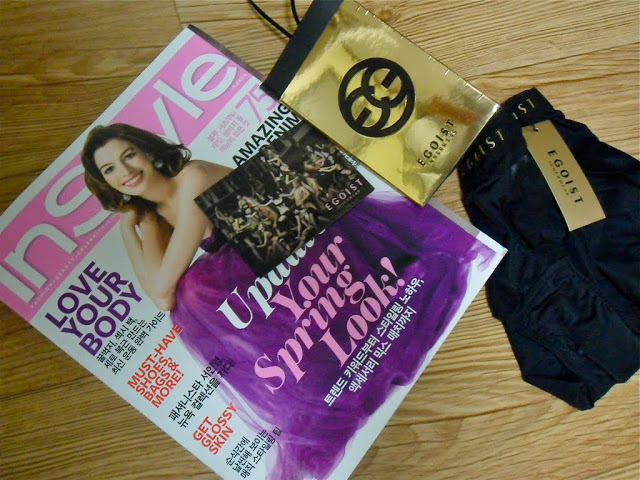
36. Visit a Korean bathhouse
Korea has public bathhouse spas (aka jjimjilbangs) that are inexpensive, fun, packed with entertaining rooms like sauna rooms with crystals, charcoal, salt, ice. They are popular hang out spots and a place where families and friends like to bond. It The best thing is that some are open for 24 hours. They give you a storage locker for your belongings and spa clothes to wear if you want to spend the night. Check out my Korean bathouse guide for more details.
Tip: Get a Discover Seoul pass head of time.
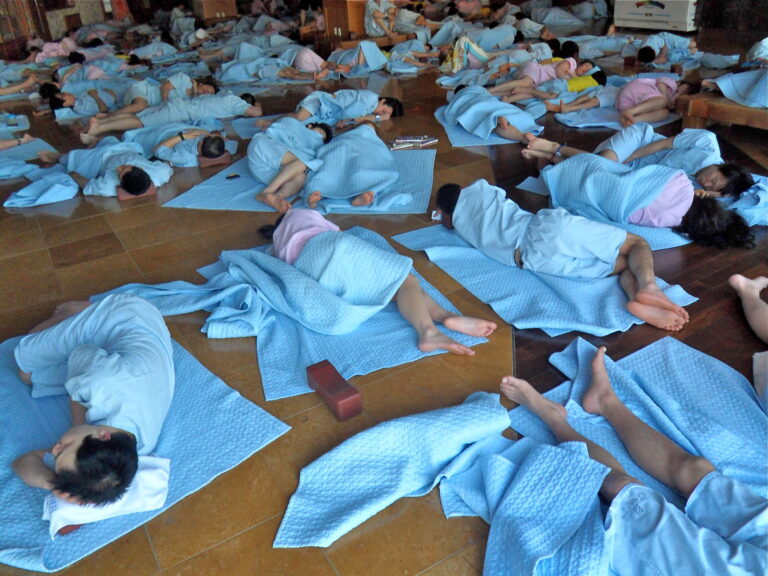
37. Cafe culture in Korean culture is crazy
Korea is crazy about coffee and cafe culture. They likely have the most cafes of any country and many are themed with a quirky, artistic and original flair. You’ll find stylish to thematic cafes from Snoopy, Hello Kitty to a cat and meerkat cafe!
Tip: If you think you’ll want to explore Korea’s thematic cafes, check out some of their crazy thematic museums! Jeju Island has some of the best and weirdest museums.
Read: Hongdae’s thematic cafes
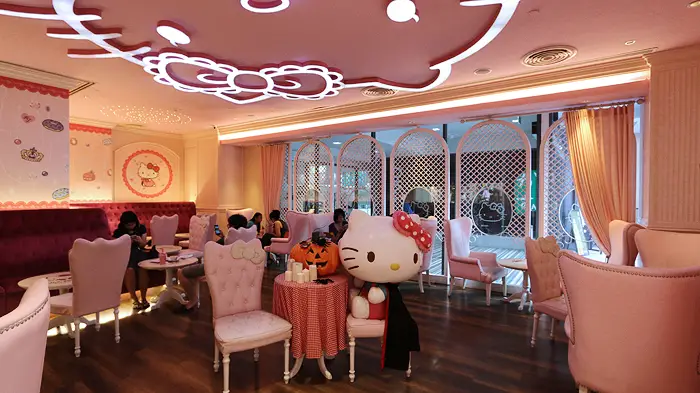
38. Hiking is a favorite pastime and fashion sport in Korea.
Hiking mountains in Korea are a favorite pastime with Koreans, such that you’ll often find hiking gear stores. It is common to see 60-year Korean men and women trotting up steep slopes that might have you wheezing. Often they will be dressed fashionably in neon pants and windbreaker jackets, hiking poles, backpacks, and sun hats. If you are an avid hiker you’ll love exploring all the hiking trails Korea has to offer! Walking trails are an element of Korea.
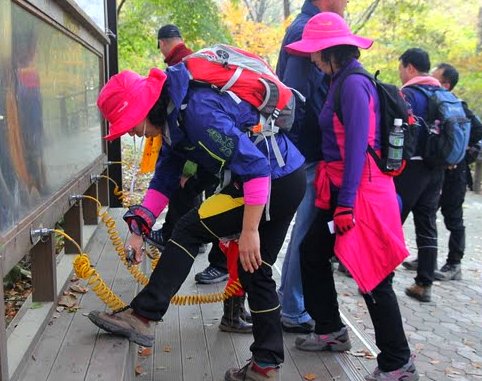

39. Skincare stores are amazing
Beauty is skin deep as the saying goes and in Koreans take this in stride. There are a plethora of skincare stores to aid your beauty and restore your skin’s moisture, collagen, youth, dewy appearance, etc… I fell in love with skincare stores and Korean BB cream. Many Korean skincare products use the finest ingredients, touting herbal ingredients, and lovely fragrances and they feel remarkable going on! Best of all, many are quite effective and inexpensive! Popular skincare stores in Korea: Tony Moly, Nature Republic, The Face Shop, Skin Food, Olive Young, etc..
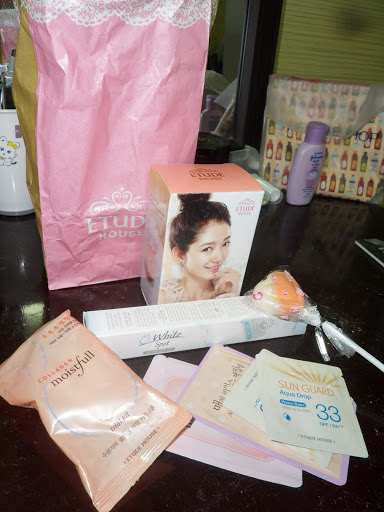
40. Getting a perm in Korea!!!
Korea has two favorite salon treatments that you won’t find elsewhere~ the magic straight and magic volume. These perms are treatments which will seal in a curl or straighten your hair pin-straight so you won’t have to worry about blow-drying and styling for half a year! Treatments can take several hours and cost $150-200 USD, but it’s highly effective and worth every penny! Read about my experience with Korean perms
41. Experience living like a monk with temple stays
In Korea, some temples offer temple stay retreats, where you can learn meditation and live and dine like Buddhist monks. It is one of the coolest cultural experiences I’ve had in Korea, but know you must abide by the scheduled training and be okay with vegetarian food. Read more about my temple stay experience.
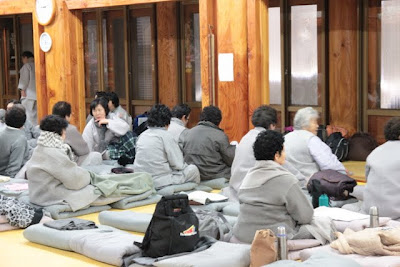
42. Shopping in Korea is fun.
I’ve never known myself to be much of a shopper, but Korea makes me love shopping! From K-drama paraphernalia to cool Korean fashion and cute chachkis, it’s easy to lose your won in Korea.
Travel Resources for your Korea trip
Booking.com – Hotel bookings. No cancellation fees
Safety Wing – affordable travel insurance with COVID coverage
NordVPN – Online security and the ability to watch Netflix. Use “grrrltraveler” for 70% off 3-year plan + 1 month free
Klook – Book tours in Korea and Asia
Get your Guide – book tours in Korea
Korea SIMs – for prepaid travel SIM Cards
Korea Rail Pass – for getting around Korea
Related Posts on Trip Planning for Korea
Cool souvenirs to buy in Korea (Part1 & Part 2)
Best things to Do and See on Jeju Island
9 Popular Neighborhoods of Seoul
5 Secret Places in Korea
How to rent mobile phones in Korea
Best Mobile Apps for traveling Korea
What are your top travel essentials for Korea? What are essential things to know before traveling Korea?
Watch Essential Travel Tips for Korea (video)
Pin to Pinterest
